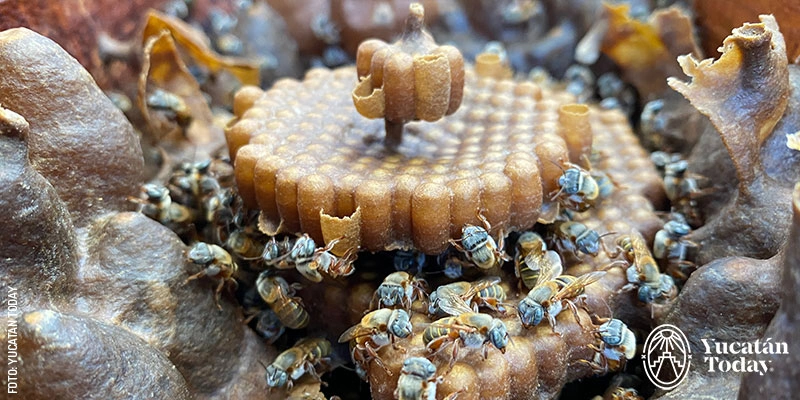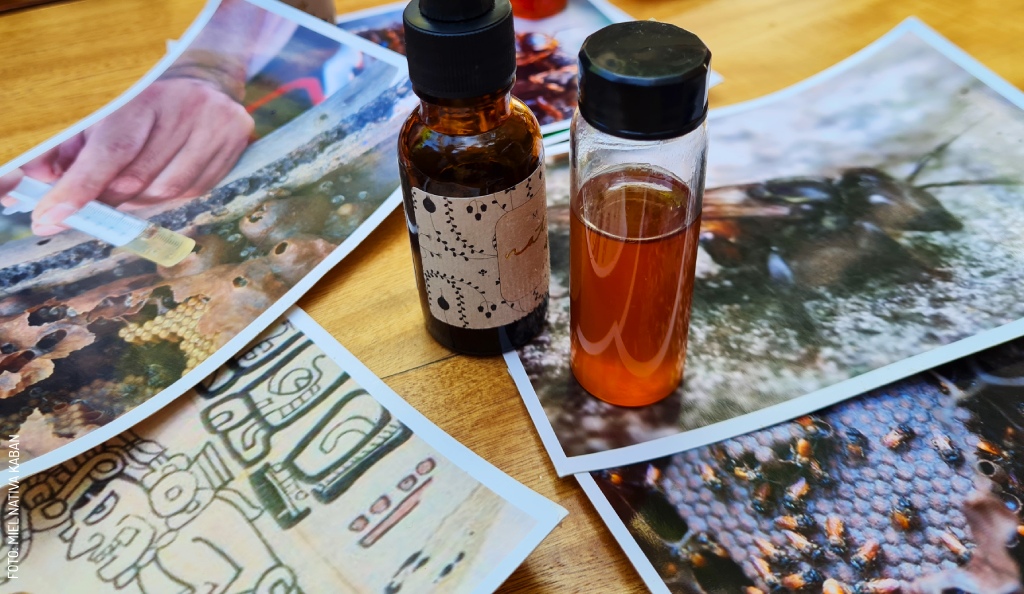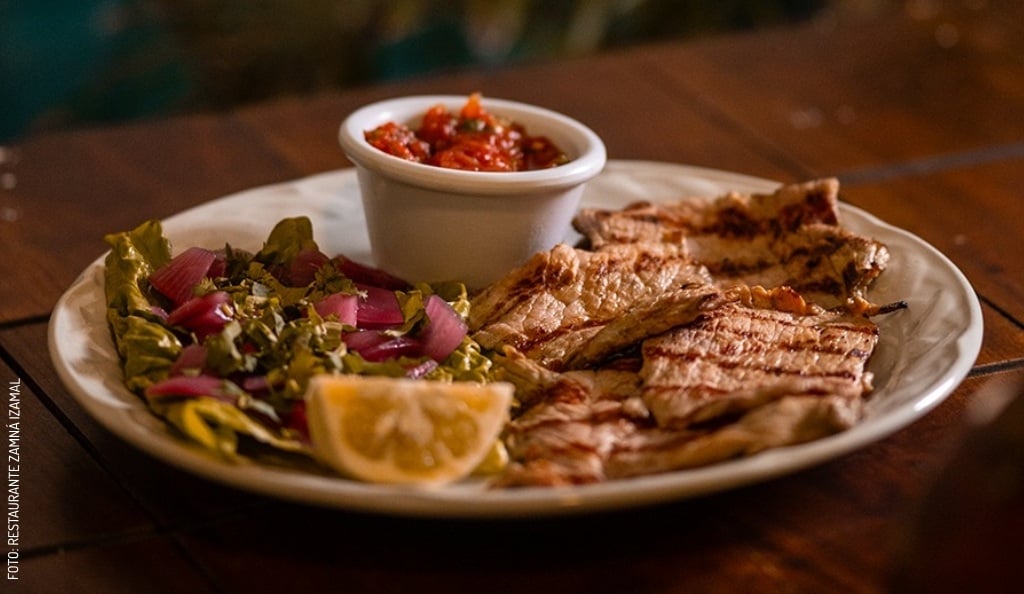
Meet Yucatán’s Native Bees
If you’re a honey connoisseur, you might already know that Yucatecan honey—even the most common variety— has a rich and distinctive flavor, unlike any other honey produced in México or the world. What you might not know is that Yucatán has been home to dozens of bee species for millennia, including some that are very different from the widely known European honeybee (Apis mellifera).
The best-known native Yucatecan bee is the Melipona beecheii (xunáan kaab, or “lady bee”), but it’s far from the only one. At least 152 species of native bees have been documented on the Yucatán Península, 17 of which are meliponas, or stingless bees. What they all have in common is that they lack a functional stinger—not because they lost it over their lifespan, but because they are born that way: harmless, social, and, of course, sweet.
Stingless bees in Yucatán

For centuries, Yucatecos have lived alongside these gentle native bees, using their honey, royal jelly, pollen, and propolis for various purposes, not only for food but also for medicinal, ceremonial, and sacred uses. They learned to create homes for them in logs (called jobones), similar to the natural habitats they prefer, but placed horizontally to make them easier to care for.
The different types of native bees produce honey with unique and unmistakable flavors. However, another shared trait is that the amount of honey they produce is far less (much, much less) than that of the Apis honeybee. This makes native bee honey scarcer—and therefore much more expensive. On the low end, buying directly from beekeepers, you can expect to pay between $2,000 and $3,000 pesos for a full liter (roughly a quart).
To survive, these bee species need native flowers to visit and tree trunks to build their nests—or humans who will maintain them in jobones. Considering the expansion of urban areas, deforestation of the Yucatecan jungle, indiscriminate pesticide use, and the fact that beekeeping is much more profitable than meliponiculture, we can’t say that Yucatán’s native bees have a guaranteed future.
How to protect Yucatán’s native bees

Fortunately, several people are working to revive not only the practice of meliponiculture but also the traditional use of native bee products, which are said to have healing properties for ailments like gastric ulcers, cataracts, and even cancer.
No matter where you live, try to be a better neighbor to the bees around you. Make room in your garden for native plants, and seek out less harmful pest control options—garlic, dish soap, and tobacco leaves are effective for getting rid of some pesky insects without harming bees. Given how essential native bees are for pollinating crops—and, therefore, for our food chain—these small actions can create a meaningful and lasting positive impact for everyone who lives on Earth.
More about the bees in Yucatán:

Author: Yucatán Today
Yucatán Today, the traveler's companion, has been covering Yucatán’s destinations, culture, gastronomy, and things to do for 37 years. Available in English and Spanish, it’s been featured in countless travel guides due to the quality of its content.
In love with Yucatan? Get the best of Yucatan Today in your email.
Don't miss our best articles and the monthly digital edition before anyone else.
Related articles

How to Identify Yucatecan Bees
Discover the diverse world of Yucatecan bees, from the European honeybee to the Green orchid bee. Learn about their characteristics and importance.
Yucatán's Gastronomic Stops: Dishes Worth the Trip
Travel through Yucatán by its flavors. Discover iconic dishes from each region: poc chuc in Maní, huevos motuleños, and more. A journey worth taking!




